Main content
Human: What to expect
By Fredi Devas, Producer/ Director for Human
Wildlife now must adapt to a vastly altered landscape
The human world, from our cities to our fields, has spread to almost every corner of the globe.
Wildlife now must adapt to a vastly altered landscape… and contend directly with us.
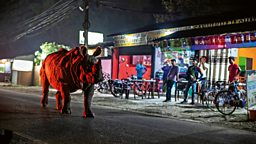
In the town of Sauraha, Nepal, this male greater one-horned rhino has left the jungle and is navigating his way right through town, to get to foraging patches on the other side of it. The Planet Earth III film crew were amazed to see that he remained totally calm as he walked past cars, motorbikes and people running to snap a picture of him on their phones!
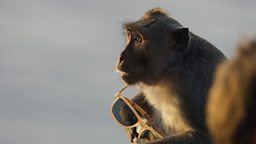
Some animals are thriving by taking us on! Long-tailed macaques in Uluwatu temple, Bali, have a habit of stealing from tourists… sunglasses, hats, shoes, and phones are often targeted. They have worked out that if they hold onto these possessions, they are offered food in return. The older, more experienced individuals, focus on items of higher value to humans. This way they can drive a harder bargain… and they simply won’t give you back your phone unless they get exactly what they’re after!
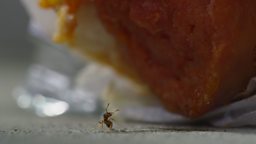
The human world can be full of opportunity, but it is changing rapidly. For wildlife the challenge is to keep up. In New York City the most successful ant is the ‘pavement ant’. Its digestive system has kept pace with the constantly changing human diet. So much so that 90% of what they eat now comes from human food. On Broadway Avenue alone they eat the equivalent of 60,000 hotdogs a year!
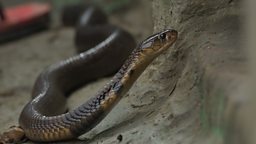
Life is not so straightforward for animals that are widely feared by humans. This monocled cobra has enough venom to kill 10 people in a single bite… and yet in this village in India the film crew witnessed snakes hunting right amongst people, inside their houses! Venomous snakes are responsible for nearly 60,000 deaths in India alone, but here, somehow, people and cobras co-exist peacefully alongside each other. The Hindu villagers revere them and consider them to be demi-gods. Remarkably, scientists believe that this tolerance has led to a change in the snakes’ behaviour. They move more slowly and are less likely to strike when disturbed.

To see a large predator in the built-up world is a rare sight, but here in Lake Tahoe, USA, some black bears have worked out that a simple push on a door can lead them into a room stacked high with food! These city bears are up to 50% heavier than their country cousins, and bodyweight is key to surviving the winter while hibernating.
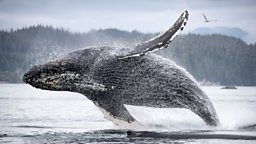
Solutions to human made problems can come from the natural world in the most surprising ways. There are large parts of our world’s oceans that are rich in nutrients but low in iron. Phytoplankton, small marine organisms that photosynthesize, need iron to grow. Whale poo just happens to be rich in iron, and they always poo at the surface. This iron fertilises the water and the phytoplankton numbers bloom. Through photosynthesis, they take carbon out of the atmosphere, just like trees do. The process is called the “Whale Pump” and it is estimated that each great whale has the same impact on combatting climate change as planting 30,000 trees!
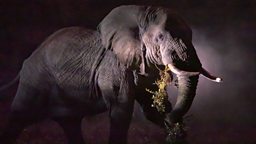
When large animals compete with humans for food it often leads to conflict. Here, a six tonne African bull elephant is raiding the tomato crops of farmers in Kenya. To stand the best chance of winning fights for access to females, the bulls need to put on as much weight as possible. It’s for this reason that they take huge risks by sneaking into fields at night to eat highly nutritious crops. This can have a devastating impact on the livelihood of subsistence farmers, and so they defend their crops. It’s exhausting work for the farmers who have to guard their tomato crops every night for two months leading up to harvest.
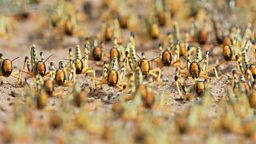
Humanity’s influence on the natural world can now be felt far and wide due to our changing climate. Unusually high rainfall in arid regions has led to population explosions of desert locusts in Northern Africa. They are normally solitary animals but when they emerge from the sand in large numbers something unusual happens. Marching side by side their knees can rub against each other. When this happens above a critical threshold it triggers a dramatic change in their physiology. Turning a vivid yellow announces that the locusts have taken on their social form. Now they fast track their development and move together as a swarm.
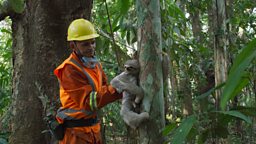
Although some species are thriving in the human world, our actions are putting unprecedented pressure on the world's wildlife. Habitat loss is the greatest issue facing wildlife today, and most of the habitat loss can be linked to agriculture. Here in the Amazon, volunteer fire-fighters rescue animals from the fires set to clear the forest for agriculture, and relocate them to pristine parts of the rainforest. For the Planet Earth III team capturing the rescue of this sloth was a truly joyous moment.
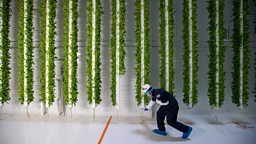
A key solution to creating space for the natural world to thrive may come from the increasing trend of growing plants vertically. This hi-tech farm, in the centre of Los Angeles, USA, produces 350 times more food than can be grown in same area in a field. It also uses 90% less water and no pesticides. If this approach is scaled up in the future it could become a significant step towards lowering our footprint on this planet.
